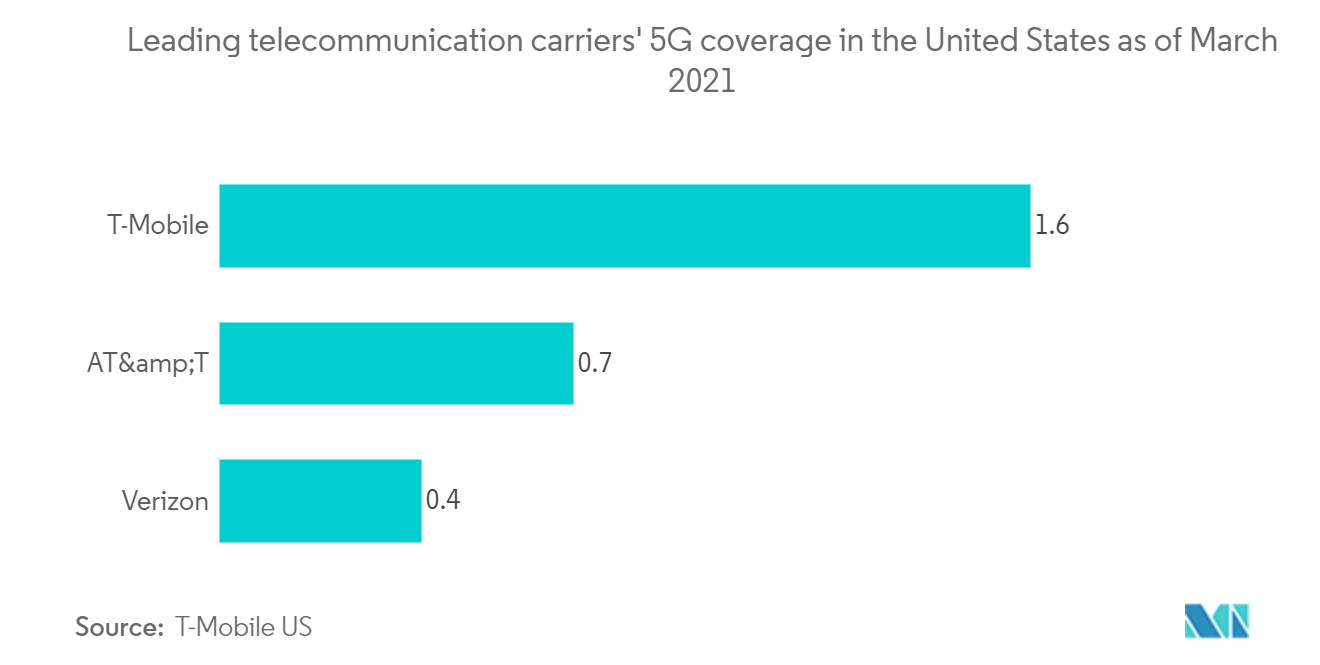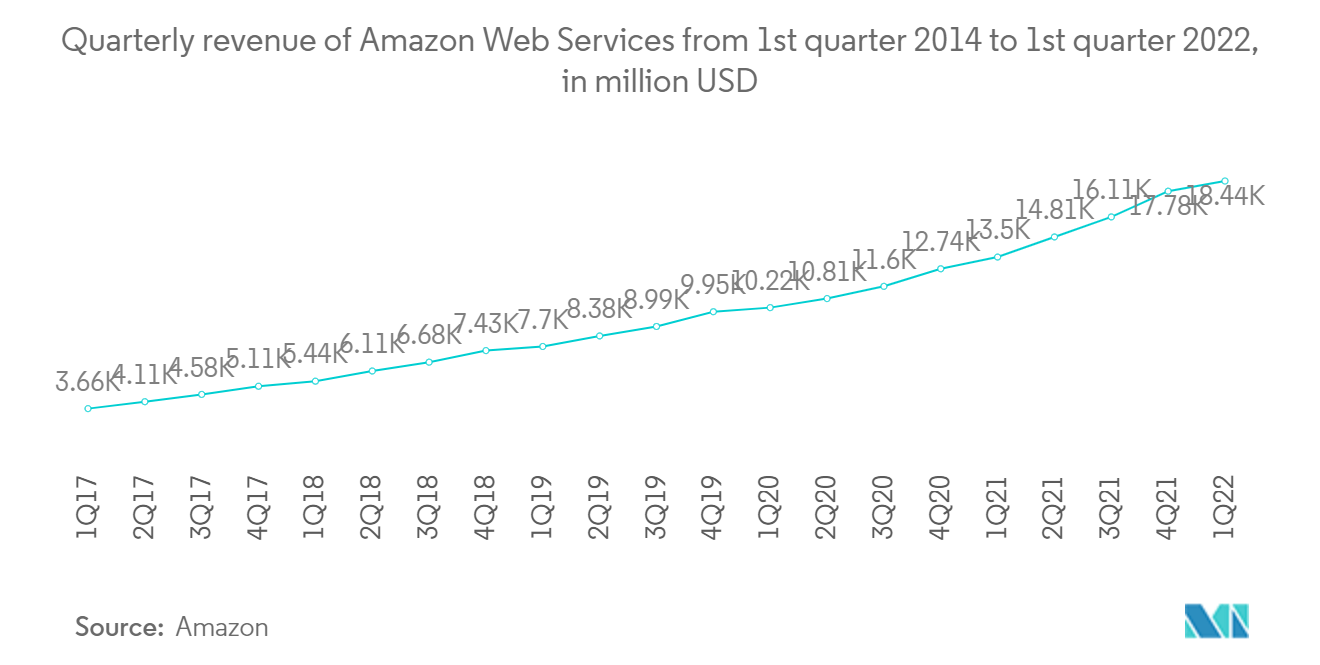Market Trends of US Telecom Industry
This section covers the major market trends shaping the US Telecom Market according to our research experts:
Deployment of 5G Networks in the United States
- Similar to how the commercialization of the internet was 25 years ago, 5G is expected to have an economic impact on future American prosperity. The next stage of the digital revolution will be supported by 5G infrastructure. Since international networks and technology are now a major battlefield for interstate rivalry, 5G presents security concerns. Still, it also concerns how we employ secure infrastructure to spur innovation and progress. Ensuring that the United States can maximize economic gains while lowering national security risk is the aim of a 5G plan.
- Even after an extensive marketing campaign used by United States telecoms to raise awareness, 5G still have lesser compelling use cases for consumers. But in the business sector, many clear use cases range from corporate requirements like industrial production and automated agriculture to demands of small firms like managing remote workforces. These instances can spur growth and profitability for telecom companies that capitalize on these prospects. For the telecoms that can capitalize on these prospects, these instances can stimulate growth and profitability.
- Supporting businesses as they decide how to shape the future of their work environments will be a crucial use case soon. This will assist businesses in identifying the connection and technology stacks needed to enable working from home and in the office products, as well as how transitioning between the two or operating in a hybrid environment can be done with ease. Small enterprises' post-pandemic resurgence presents another chance. Small companies will need more agility and lower overhead from their solutions, and 5Gbased solutions addressing their requirements will attract a wave of anticipated new company clients in late 2021 and early 2022.
- Tech giants AT&T, Verizon, and T-Mobile, have invested hugely in deploying the latest 5G technology. Verizon's 5G Ultra-Wideband is its best-performing 5G. For the best possible 5G experience, our 5G Ultra-Wideband network combines high-band (mmWave) and mid-band (C-band) spectrums. Speeds up to 10 times faster than the average 4G LTE speed is only one of the game-changing advantages of 5G Ultra-Wideband.
- Midband 5G deployment is a top priority for major mobile operators AT&T, T-Mobile, and Verizon through 2021 and 2022. During 2022, AT&T and Verizon have strategized to improve their low-band and high-band millimeter wave (5G) services. Dish, a recent competitor, intended to launch its first commercial 5G service early in 2022. The three largest U.S. carriers, AT&T, T-Mobile, and Verizon, have all introduced 5G services widely enough to make the claim of countrywide service. T-Mobile has achieved another milestone with its mid-band 2.5 GHz deployment, achieving 200 million users ahead of schedule. The company now has 300 million users in mind by the end of 2023.
- The construction of the country's 5G network, which will serve as the basis for introducing the following major mobile broadband standard, is well underway in the United States. With peak data speeds up to 20 times faster than 4G and a ten times higher network connection density than 4G, 5G creates huge prospects for economic growth, innovation, and better customer experience. Out of the three major telecommunications operators in the United States, according to T-Mobile, the company has the highest 5G coverage area as of March 2021, with 1.6 million square miles covered by its 5G network. During the same period, AT&T and Verizon covered 0.7million and 0.4 million square miles, respectively.

Rise of Cloud Computing
- Due to factors including rising home office use (due to COVID) and improvements in mobile networking, cloud utilization is on the rise in the United States. Fortunately, many computing businesses are available to support the expanding need. With 58% of the entire global cloud computing market share in 2016, the United States has established itself as a global leader and is expected to keep it. The relationship between telecom enterprises and cloud service providers is expanded to include 5G and edge computing. For example, Verizon and Amazon Web Services collaborated to create Verizon 5G EDGE, which aims to link customers, devices, and applications as quickly as possible.
- The use of mobile, broadband, and cloud technologies is facilitated by one another. Their ecosystems are interdependent. It makes it logical for ITU to take these three technologies into account in one report. Utilizing mobile, internet, and cloud technologies together makes them more useful. Their ecosystems depend on one another. The inclusion of these three technologies in one report by the ITU is logical. Implementation of the cloud can help a business in various ways, like cost flexibility, business scalability, market adaptability, and ecosystem connectivity.
- The latest trend of cloud technology has enabled telecommunication organizations to migrate to the internet, where there is no longer the need to have costly hardware for businesses to stay connected to the rest of the world.
- Cloud computing has a significant and unrestricted influence on the telecom sector. The operators and suppliers of telecom services can store and process customer data, build cloud data warehouses, move cloud data, deal with other telecom cloud services, independently access any teleservice through the cloud, etc.
- Some leading telecom companies in the United States are now using Exadata Cloud. The ground-breaking performance, scalability, flexibility, and economics of Exadata Cloud enable telecom organizations to restructure their operations at a reduced cost and with better operational agility. Exadata Cloud provides 50X faster speed than AWS RDS for mission-critical OLPS database reads. 25X more expandable, having up to 3200 database server threads and 2.5 PB uncompressed database. Also, the technology is approximately 47% less costly than using AWS RDS. According to an IDC report, this is a faster cloud-based technology with lesser usage costs. Owing to the architectural network across the Exadata deployment model, the users can easily switch from on-premises to cloud or cloud to cloud network.
- To set a company apart and cloudify it, Amazon Web Services (AWS) offers the most cutting-edge and secure cloud infrastructure, the quickest rate of innovation, and the broadest community of telecom partner companies. To boost tomorrow's growth, we are developing and creating secure, scalable software-driven networks, streamlining business processes, and redefining the customer experience. Due to the remote communication brought on by the pandemic, telecom corporations based in the United States, like AT&T, Verizon, and T-Mobile, have gained even more chances to raise customer demand starting in 2020. Telecommunications were compelled to be used for work, personal communication, healthcare, food delivery, entertainment, and other fundamental human necessities.

